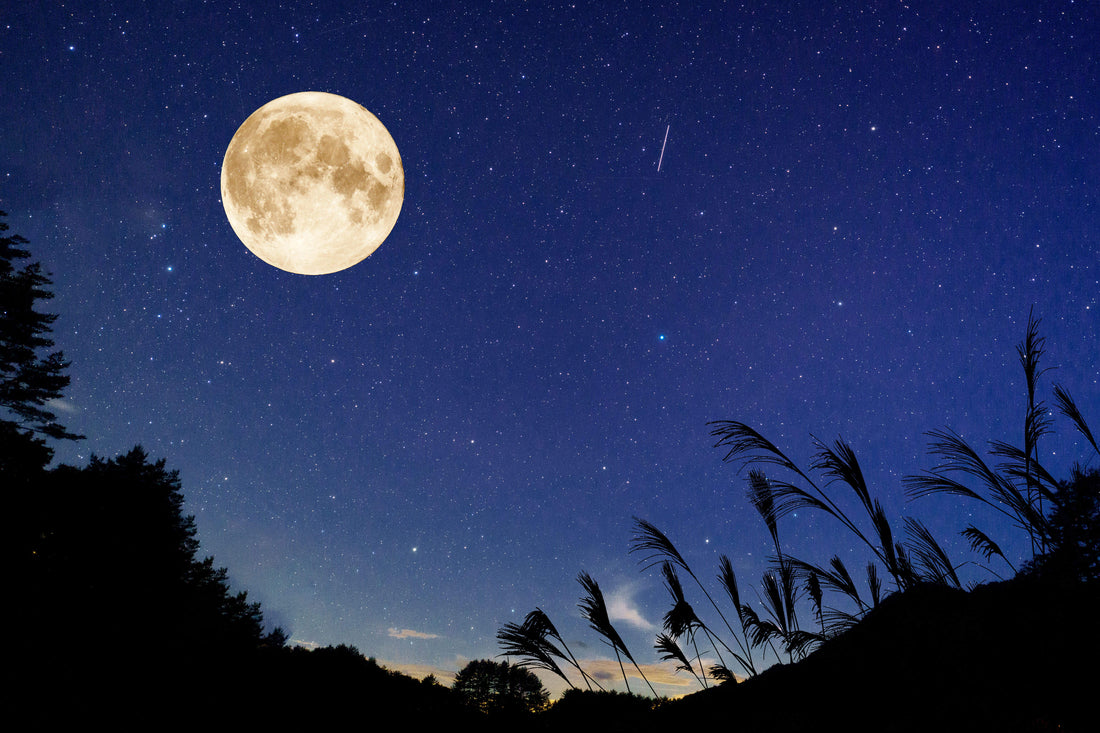In Japan, there is a day called "十五夜 (Jugoya)".
In 2023, the day will be September 29. The Japanese reading of "Jugoya" is "fifteen nights," and it is an event to view the moon in mid-autumn, the middle of the autumn season. It is believed that the air is clear and the beautiful moon can be seen during this time.
This year's Jugoya coincides with the full moon, and a beautiful moon is expected to be seen.
History
It was during the Heian period (794-1185) that 月見-tsukimi-(moon viewing) on the night of the Jugoya of the month came to be considered an "event. Originally, it was a tsukimi party that came from China and became popular among the aristocrats of the Heian period. It was not until the Edo period (1603-1867) that tsukimi became popular among the general public. Since then, it has become a widely popular custom up to the present day, although its meaning has changed.
The Meaning of Tsukimi on the Jugoya
In the Edo period (1603-1867), the meaning of tsukimi came to be associated with gratitude to the moon for the harvest, since tsukimi was close to the harvest season. Japanese people generally recognize that it is "to ask and thank the moon so that we can have a lot of food in the fall," and that "it has been said since ancient times that looking at the moon on the most beautiful day of the year brings good things.
Various offerings
Tsukimi Dango

Round dango(rice cake) resembling the moon are called tsukimi-dango. It is believed that rice was first made into dango to express gratitude for the grain harvest. On the jugoya, 15 (or 5) dango are piled up in a pyramid shape, and on the thirteenth night, 13 dango are piled up in a pyramid shape. The shape and arrangement of the dango may vary from region to region.
Susuki

The jugoya traditionally decorated with ears of rice because it was the time of the rice harvest, but gradually susuki(silver grass), which resembles the shape of rice, came to be used. In some areas, the sharply cut awn is believed to ward off evil spirits and is displayed in the garden or hung in front of the entrance after being displayed at moon viewing.Susuki is one of the seven grasses of autumn.
Seasonal Vegetables

Jugoya, also called "Imo Meigetsu," is a day to celebrate the harvest of potatoes. In honor of this name, we recommend offering taro and sweet potatoes. It is also a good idea to offer fruits such as chestnuts, grapes, and other crops that are in season in September.
Lastly, here is a simple recipe for tsukimi-dango!🌕

Ingredients: for 15 dumplings
・100 g : dumpling flour
・80cc : water
<How to make >
- Add a little water to the dumpling flour and knead.
- When the dumplings are as soft as an earlobe, shape them into a round ball.
- Boil the dumplings in boiling water.
- When the dumplings rise to the surface, boil them for about 2 minutes more.
- Cool the dumplings in cold water and drain.
- When the surface of the dumplings is dry, place them on a plate.
Please enjoy the arrangement with soybean flour or red bean paste if you like 🍡

